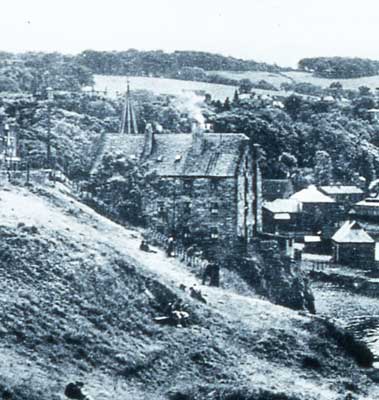
The granary which stood at the top of the High Street until 1968 was always assumed to have humble beginnings.
But it turns out that this was not quite the case – and it was thanks to a programme last week about the River Forth in the Channel 4 series Britain at Low Tide that I made the connection.
In 1802 John Hay, who had been proprietor of the lands of Newport since 1784, feued a piece of his ground at Newport harbour to John Stein of Kennetpans. Hay granted Stein the right to build a granary, if he wished, and also to bring vessels into the harbour at Newport and to ship corn from the granary.
Stein certainly did wish to build the granary and he acted pretty promptly because a plan of Tayfield dated 1805 shows the granary in place. But why should a businessman from Kennetpans (close by the Clackmannanshire Bridge) be interested in the Newport harbour area?
In a word – whisky.
John Stein is credited with pioneering whisky as an industry and his distillery at Kennetpans, the subject of the television programme, was the first industrial-scale producer of the spirit. No doubt he saw the harbour at Newport with a newly-built granary as an important stage in getting the barley from the fields of North Fife to his distilleries on the Forth or possibly further afield. Remember, this was at a time when transport by sea was the most economical means of transporting large quantities of goods. Further proof of the importance of the granary at that time is that William Haig, distiller at Kincaple, and John Pitcairn, excise officer at Kincaple, were witnesses to the purchase of the ground. (The distilling families of Haig and Jameson were related to the Steins by marriage.)
John Hay didn’t miss out – he received shore dues of 1 plack Scots for each boll of grain delivered out of the granary and shipped from the harbour.
However, for whatever reason, in 1828 John Stein’s heir, John Stein of Ashford, Kent, sold the granary to James Wilson – a Cupar corn merchant. It subsequently passed to George Kerr Harrower, corn merchant, and then to James Ronald, another corn merchant. But by this time – the late 1860s – shipping corn by sea from Newport was becoming less profitable and James Ronald converted the building into housing around 1870.
The old granary was home to many Newport families for almost a hundred years.
The Granary Lane housing complex now stands on the site of the granary and the adjoining original Newport gasworks.
Sources:
Sasine: John Hay to John Stein, 1802, RS 32/53/499 (extract here);
Sasine: John Stein to James Wilson, recorded 5 January 1829, see abridgement 4604 of 1829;
RHP 30436, Photocopy of Plan of Tayfield, 1805;
all at the National Records of Scotland, Edinburgh.
Channel 4 Television Britain at Low Tide, Series 3, Programme 2.
Homework: How much is 1 plack Scots per boll of grain today?
